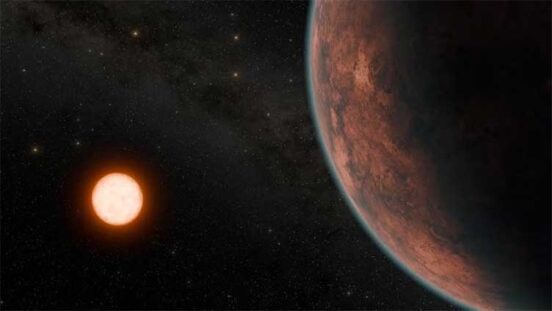UNS: Scientists have found a new Earth-like planet that could support alien life – just 40 light-years away.
The planet is a remarkable discovery in the search for habitable worlds: it is slightly smaller than the Earth, and thought to be just a little hotter. Many planets outside our solar system, called exoplanets, tend to be much larger and hotter than our own world.
The newly discovered planet is called Gliese 12b and researchers say that even if we cannot find whether it is home to alien life then it will help in our search for other worlds that might be.
The planet orbits its host star every 12.8 days, and is comparable in size to Venus – so slightly smaller than Earth.
It has an estimated surface temperature of 42C, which is lower than most of the 5,000-odd exoplanets (planets outside of the solar system) confirmed so far.
Astronomers suggest Gliese 12 b is one of the few known planets where humans could theoretically survive, but they are still unsure what its atmosphere looks like, if it has one at all.
Getting an answer to what the atmosphere looks like is vital because it would reveal if the planet can maintain temperatures suitable for liquid water – and possibly life – to exist on its surface.
Masayuki Kuzuhara, a project assistant professor at the Astrobiology Centre in Tokyo, who co-led one research team with Akihiko Fukui, said: “We’ve found the nearest, transiting, temperate, Earth-size world located to date.
“Although we don’t yet know whether it possesses an atmosphere, we’ve been thinking of it as an exo-Venus, with similar size and energy received from its star as our planetary neighbour in the solar system.”
The University of Warwick’s Professor Thomas Wilson, a physicist, was involved in the discovery, using data from Nasa’s satellites to confirm the planet’s existence and characteristics such as its size, temperature, and distance away from Earth.
He said: “This is a really exciting discovery and will help our research into planets similar to Earth.
“Sadly, this planet is a little far away for us to experience it more closely. The light we are seeing now is from 40 years ago – that’s how long it has taken to reach us here on Earth.
“Planets like Gliese 12 b are few and far between, so for us to be able to examine one this closely and learn about its atmosphere and temperature is very rare.”
The two teams, including one in Tokyo, used observations by Nasa’s TESS (Transiting Exoplanet Survey Satellite) to help make their discovery.
The planet’s equivalent of the Sun, called Gliese 12, is a cool red dwarf located in constellation Pisces.
The star is only about 27% of the Sun’s size, with about 60% of the Sun’s surface temperature.
Gliese 12 b is not the first Earth-like exoplanet to have been discovered, but Nasa said there are only a handful of worlds like it that warrant a closer look.




